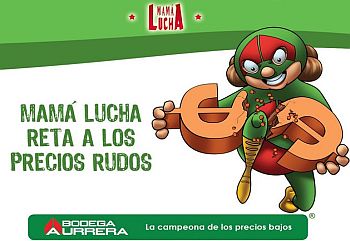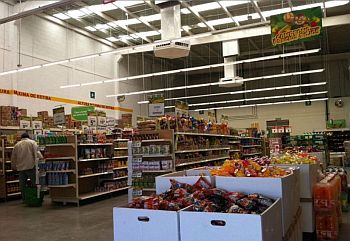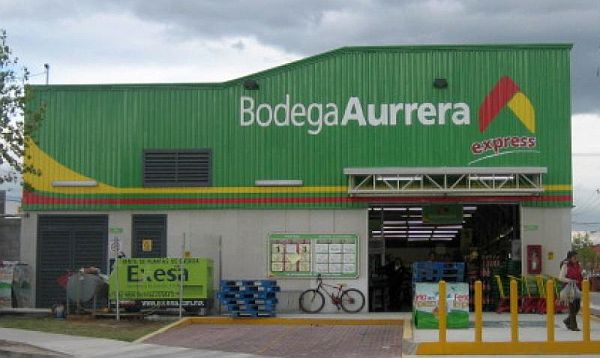La Guadalupana, Mexico - Wal-Mart Stores Inc. is taking on its biggest competition of all in Mexico: the street vendors, traditional markets, and small stores that account for over half of grocery sales in the country.
The attack comes as Wal-Mart's annual sales in Mexico have stagnated after years of standout growth. The Bentonville, Arkansas company says it needs to "rejuvenate" the Mexican business, which accounts for 20 percent of Wal-Mart's international sales, making Mexico one of the retailer's biggest global markets.
Yet finding new sources of growth isn't easy in a country where Wal-Mart has already conquered more than a fifth of all grocery sales, nearly double the market share of its next three big chain-store competitors combined, according to data from multinational banking and financial services company, HSBC.
Space for supermarkets, not to mention big-box stores, is hard to come by in Mexico's congested towns and cities, where consumers tend to shop in family-owned shops or markets. Across Latin America, these small grocers and markets feed around half the population, the majority of whom are poor.
Wal-Mart's solution for Mexico is a mini-grocer format called Bodega Aurrera Express, which the company launched in 2008. The store looks like an oversize mom-and-pop shop, with products stacked high against the walls. Bodega Aurrera's mascot is "Mama Lucha," a chubby cartoon homemaker dressed like a masked wrestler who fights for the best prices.
 |
Wal-Mart has nearly 900 of the mini-grocers open.
"We're concerned about how to reach the low-income segment," said Cristian Barrientos, head of the Bodega Aurrera formats at the company's local unit, Wal-Mart de México. "Most of the mouths are concentrated there."
Since 80 percent of consumers in Latin America fall somewhere between middle class and poor, retailers who ignore that huge segment of the population aren't really in the game, said Mr. Barrientos, who previously worked for Wal-Mart in Chile. Small stores, he added, are crucial for attending the lower-income brackets. Wal-Mart operates in nine Latin American countries.
Simpler, more-convenient stores are also winning in other markets. Wal-Mart's roughly 500 smaller-format Neighborhood Markets grocery stores in the US posted a 5.5 percent sales increase, excluding newly opened or closed locations, in the three months through October versus Wal-Mart's total 0.5 percent same-store sales rise in the US for the same period.
In Brazil, big supermarket chains such as Grupo Pão de Açucar and Carrefour are gaining traction with stores about the same size as Bodega Aurrera Express. Brazilians living in congested cities and working long hours clearly favor the mini-grocers for their practicality, said Erick Rodrigues, a São Paulo-based analyst with Moody's Investors Service.
Throughout Latin America, "proximity is important," added Alonso Sánchez, a Mexico City-based analyst with Moody's.
The Bodega Aurrera Express stores average 2,690 square feet of selling space, roughly 3 percent of the area needed to open a Wal-Mart Supercenter.
Still, street vendors have a tight grip on the market. The tradition of shopping at an open-air market known as a tianguis dates back to pre-Columbian times. And many Mexicans are reluctant to take that custom indoors.
The markets are so beloved that in 2011, the Mexico City government enacted a moratorium on openings of chain stores near any of the capital's 300 traditional markets. Then-mayor Marcelo Ebrard argued that the markets needed protection because they were the social glue of neighborhoods.
 |
The moratorium was overturned in mid-2013.
In the small town of La Guadalapana, an hour's drive from Mexico City, a Bodega Aurrera Express opened four years ago on the main avenue, where a street market springs into action three days a week.
Employees at this Bodega Aurrera Express say their busiest days are when the street market is open. They call it symbiosis.
As the street market bustled on a recent day, shoppers trickled into the Bodega Aurrera Express to buy bags of potato chips and boxes of juice. Laundry detergent and toilet paper are usually big sellers, too, employees said.
The Bodega Aurrera Express feels spacious with its high-ceilings and bright lights, while the tianguis is arranged in tight rows under the orange glow of plastic tarps.
To the vendors outside, the small format Wal-Mart store is competing for sales, but not very successfully.
"People are accustomed to the tianguis," said Rubén García, a 50-year-old who sells personal-care items like body lotion alongside packets of Tang drink mix in the street market. "This is how it has always been in Mexico."
Marisol Carrillo has shopped at the La Guadalupana street market, in the shadow of a three-story-tall monument to the Virgin Mary, for as long as she can remember.
The 30-year-old stay-at-home mother of three buys packaged items like toothpaste and shampoo at Bodega Aurrera Express, where she says the prices are better, but still gets her fruit, vegetables, and meat from the open-air stalls.
Shopping in the street market is "a custom," she said after purchasing chopped vegetables, thin skirt steaks, and tomato-tinged rice for a late lunch. "And it seems more practical than grabbing a car to go to the supermarket."
Original Story


